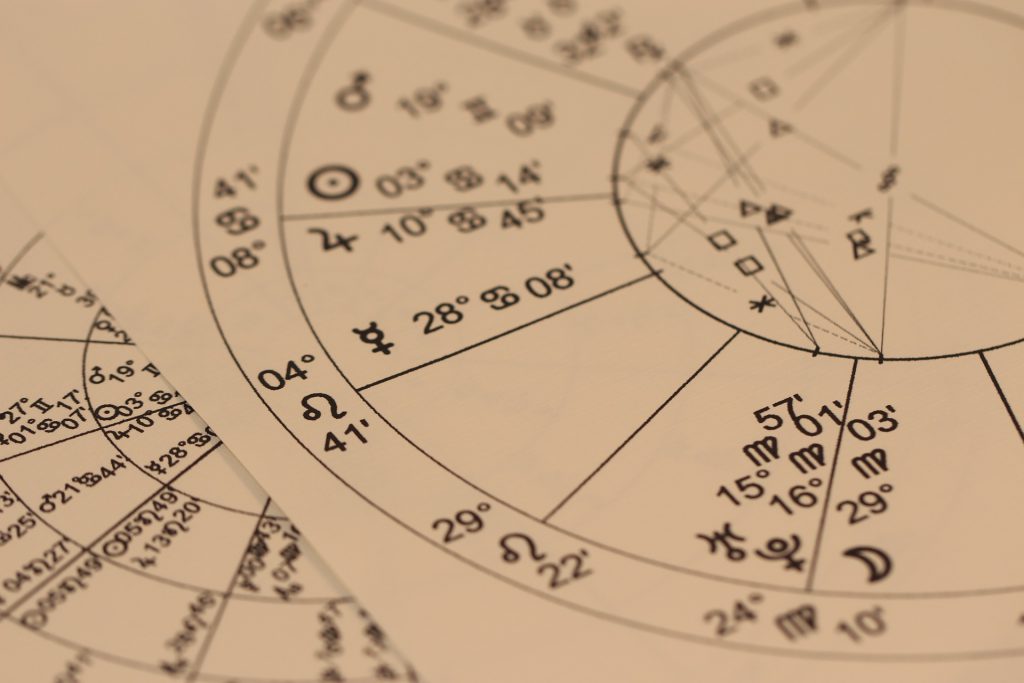Like many niche interests, most people understand the very basic aspects of astrology—such as their own sun sign or maybe the sign they’re most compatible with. Within the last several decades, astrology has grown enormously in popularity and has inspired millions of people to dig deeper into their charts. As you may already know, astrology is more than just sun signs and each person has many different signs working together within their chart. These signs are determined by the positioning of the moon and planets based on the time and location of their birth, giving us not only a sun sign, but a moon sign, rising sign and signs for each of the eight planets (Earth not included) as well. These signs tell us about who we are in a much more nuanced and complex way, from how we communicate, how we emote, how we love and how we connect to the world around us. But, there’s another layer to astrology that’s seldom explored, even by professed astrology enthusiasts, and that’s houses.
The planets tell us how each sign in our chart expresses itself, for example an ascendant in Leo means that you come off as someone bright, magnetic and energetic or a Venus in Scorpio means that you’re very mysterious, passionate and seductive in your romantic life. However, our houses show us what areas of our lives these signs will have the most impact on and according to Brooklyn based astrologer Carmen Mayes, they “tell a story of personal evolution.” There are 12 houses, each ruling a different part of life and most people have multiple houses occupied by one or more planets.

The first house is determined by your ascendant sign and it rules self-image and personal identity. Some people have more than one sign in their first house, which means that these aspects of their identity come through prominently in their personality.
The second house rules materialism and the senses.
The third house rules communication, thoughts and interactions in our immediate environment.
The fourth house rules the home, our roots and family.
The fifth house rules self-expression, creativity and passion.
The sixth house rules routine, order and self-improvement.
The seventh house rules partnership and relationships.
The eighth house rules transformation, growth and sexuality.
The ninth house rules beliefs, exploration and philosophy.
The tenth house rules our career, responsibility and reputation.
The eleventh house rules aspirations, hopes and humanity.
The twelfth house rules dreams, karma and spiritual growth.

Once you have your own chart in front of you, you can see which houses are occupied, which indicate what areas of your life are important to your personal story arch. Not every house will be represented, as there are only 10 planets (sun, moon and rising included) and 12 houses. If you have an empty house, that doesn’t mean that this area of your life will be empty, it just may not play as significant a role in your overall life story. For instance, if you looked at the houses in terms of chapters in a book, the empty houses would be filler and background information, whereas filled houses would be the meat of the story. In many cases people will have multiple planets in a single house, meaning that energy is concentrated into these areas of your life. If three or more (some experts say four or more) planets occupy one house, this is called a stellium. This tends to mean that a person obsesses heavily in one area of their life, to the point where it can be unhealthy, and should work to find balance with an opposing house.
The houses, signs and planets work together (both harmoniously and inharmoniously) to make up a multi-dimensional human being. They show us who we are and how that relates to the ways we live our lives. It’s certainly not the easiest thing to wrap your head around and for better understanding, we recommend booking an appointment with an astrologer who can flush out the nuances of your chart one-on-one.
Sources:



